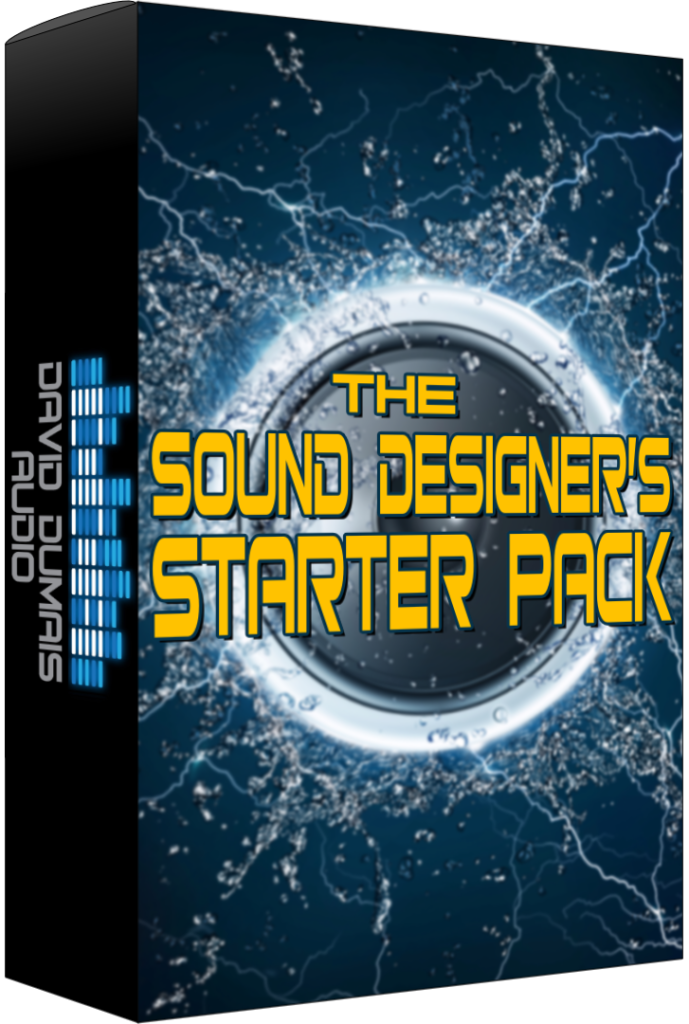Sound Design Workflow | An EASY 4-Step Framework For Creating (almost) Any Sound Effect
*Please note that this blog post may contain affiliate links*
Sound Designer’s Starter Pack: https://daviddumaisaudio.com/starterpack
Build your portfolio, create an online presence, and showcase your work (Free Training): https://www.daviddumaisaudio.com/sound-design-content-training/
As a sound designer, I’ve come across some great tools and techniques that make the process of creating sounds much easier. In this blog post, I’d like to share a simple sound design workflow that can help you create almost any sound effect you desire. Whether you’re just starting out or you’re a seasoned sound designer looking to spice up your sounds, this process might help you create the quality of sound you are looking for.
1. Mentally Break Down Your Sound Effect
The first step in my sound design workflow is to mentally break down your sound effect into possible layers. For example, if you want to create a punch sound effect, here are some possible layers that you might want or need for your sound:
- Skin-to-skin punch sounds
- Clothing sounds
- Bones crunching sounds
- Gore
- Sub
- Whooshes
- Sweetener sounds
- Create Folders and Record, Synthesize, and Edit All Your Sounds
Once you have your layers, create a separate folder for each layer on your computer.
2. Record, Synthesize, and Edit
For each folder, record, synthesize, and edit all your sounds and put them into each folder. Aim for something like 50 to 100 sounds for each folder. Once you’ve done this for every layer, you will have a collection of sound effects that you can use for your projects.
3. Design and Layer in Your DAW
Now that you have a collection of sound effects, open your DAW (Digital Audio Workstation) and start experimenting with sounds from each folder. Be creative in how you process and layer them together to make your punch sound effect. Don’t be afraid to make a bunch of garbage sounds in the process, as some of them could lead to happy accidents that you can use later. Aim to design around 50 to 100 sound effects and save them in a new folder that will be your design folder.
4. Assemble Your Sound Effect Together
Once you’ve designed your sound effects, the final step is to assemble them together and put them to picture or into the game engine. Bring in your design layer clips and start layering them together, maybe even with some of your raw clips, your recorded sound files, and put them together inside your DAW. Start processing them, adding EQ, compression effects, whatever it is that you might want to use and put those together to picture, to whatever it is that you are designing.
Benefits Of This Sound Design Workflow
The great advantage of going through this process is that you have a collection of sound effects that you can pull and bring into your session. This collection of sound effects allows you to create a whole ton of variation if you wanted to, and will save you time in the long run.
Another benefit of this workflow is that you are encouraged to be creative and experiment with different sound effects. The more you experiment, the more you’ll discover new ways to design your sound effects, and you might even come up with something new and unique.
Final Thoughts
This sound design workflow is a great starting point for creating almost any sound effect. However, keep in mind that the process is not set in stone, and you can tweak and modify it to fit your needs. Experiment with different techniques and see what works best for you. Happy designing!
If this was valuable to you, please consider sharing it!
Have any questions or comments?
Leave them down below!
